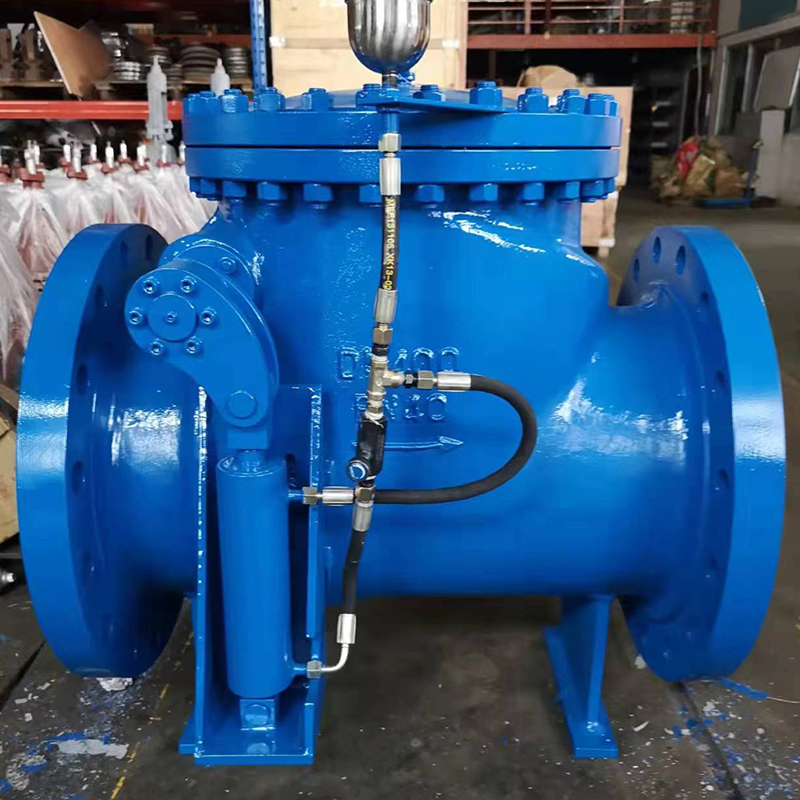
The Ball Check Valve for Sewage is specifically designed to handle the challenges associated with wastewater systems. These systems often contain suspended solids, fibrous materials, and corrosive substances that can interfere with valve function. The ball check valve addresses these challenges with a simple and robust design.

This valve operates using a rubber-coated or stainless-steel ball that rests on a seat. When fluid flows in the correct direction, the pressure lifts the ball, allowing passage. When flow reverses, the ball returns to the seat, sealing the valve and preventing backflow.
Clog-resistant design: With a smooth, wide flow path and minimal internal components, this valve reduces the risk of blockage caused by solids or debris.
Low maintenance: Its self-cleaning function and absence of complex mechanisms make it suitable for systems that require minimal upkeep.
Durability: Materials used in sewage ball check valves are resistant to abrasion and chemical attack, ensuring a longer service life even in aggressive environments.
Quiet operation: The soft-seating and gradual ball movement reduce noise and water hammer during closing.
Used in municipal sewage systems, industrial wastewater lines, and drainage systems, the Ball Check Valve for Sewage provides reliable backflow prevention with simple functionality and long-term performance.
The Cryogenic Check Valve is designed for ultra-low temperature environments such as those involving liquefied natural gas (LNG), oxygen, nitrogen, and helium. These fluids require special handling to ensure safety and efficiency, as their temperatures can drop below -150°C (-238°F). Standard valves cannot maintain performance at these levels, making cryogenic check valves essential in such systems.
Benefits of cryogenic check valves include:
Material suitability: They are manufactured from materials like stainless steel or special cryogenic alloys that maintain strength and sealing integrity at low temperatures.
Extended bonnet design: Many cryogenic valves feature an extended bonnet that keeps the stem and sealing area away from the coldest fluid zones. This design helps reduce frost buildup and preserves packing integrity.
Reliable sealing: Special seat materials and precision-machined surfaces ensure tight shutoff, which is critical for preventing leakage of hazardous or high-value cryogenic fluids.
Backflow protection: In systems using gravity feed or pump assistance, preventing reverse flow is vital to avoid contamination or equipment damage. Cryogenic check valves provide quick and dependable closure.
Application flexibility: These valves are used in liquefaction plants, cryogenic transport tanks, aerospace ground support, and medical gas supply systems.
A Distributor Check Valve is a specialized valve designed for systems where fluid distribution needs to be controlled across multiple lines, often in industrial process or hydraulic systems. It ensures unidirectional flow to various branches of a distribution network while preventing any reverse flow that could cause system imbalance or contamination.
The working principle of the distributor check valve is similar to that of a standard check valve but tailored for multi-path distribution. It consists of a housing with multiple inlet or outlet ports, a spring-loaded disc or piston, and a sealing seat. The valve opens under forward pressure and closes automatically when flow attempts to reverse.
Key operating aspects include:
Selective flow routing: It enables controlled flow to designated branches while preventing feedback from any part of the system.
Spring assistance: A spring mechanism helps the valve close quickly when forward pressure drops, improving response time and reducing fluid backwash.
Modular configuration: Some distributor check valves come in stackable or customizable formats, allowing integration into complex manifolds or piping assemblies.
Compact and efficient: These valves are designed for easy installation and minimal footprint, which is ideal for space-limited environments.

